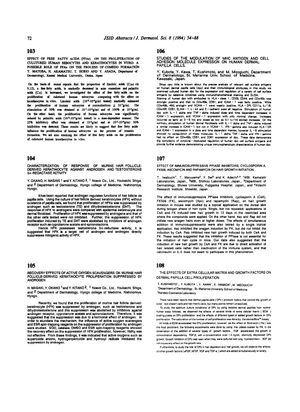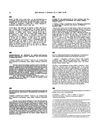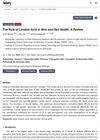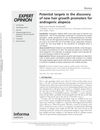The Effects of Extracellular Matrix and Growth Factors on Dermal Papilla Cell Proliferation
August 1994
in “
Journal of dermatological science
”
extracellular matrix growth factors dermal papilla cells linoleic acids palmitic acids sebocytes androgens testosterone dihydrotestosterone androgen receptor inhibitors active oxygen scavengers keratinocytes cytokines immunosuppressive PPlase inhibitors cyclosporin A FK506 ascomycin rapamycin fibronectin epidermal growth factor transforming growth factor-beta DPCs EGF TGF-β DHT

TLDR Different substances affect hair and skin cell growth in various ways.
The document from August 1, 1994, presents several studies related to hair follicle biology and skin cell proliferation. One study found that linoleic acids significantly enhanced the proliferation of human sebocytes, which could suggest a role in comedo formation in acne, while palmitic acids reduced sebocyte proliferation in a dose-dependent manner. Another study showed that murine hair follicle-derived keratinocytes (HFKs) had their proliferation suppressed by androgens such as testosterone and dihydrotestosterone, and this suppression could be abolished by androgen receptor inhibitors. Additionally, active oxygen scavengers were found to reverse the suppression of HFK proliferation by androgens. A different study examined the expression of cell surface antigens on human dermal papilla cells (DPCs) and found that certain cytokines could modulate their expression. Lastly, the effects of immunosuppressive PPlase inhibitors on hair growth initiation in mice were investigated, revealing that cyclosporin A and FK506 could induce new hair growth, while ascomycin and rapamycin did not. The document also mentions a study on the effects of extracellular matrix and growth factors on DPC proliferation, noting that all types of extracellular matrix enhanced DPC proliferation, with fibronectin having the most significant effect, and that epidermal growth factor (EGF) increased DPC growth in a concentration-dependent manner, while transforming growth factor-beta (TGF-β) over 1.0 ng/ml inhibited it. The number of participants or samples in each study was not provided in the summary.





